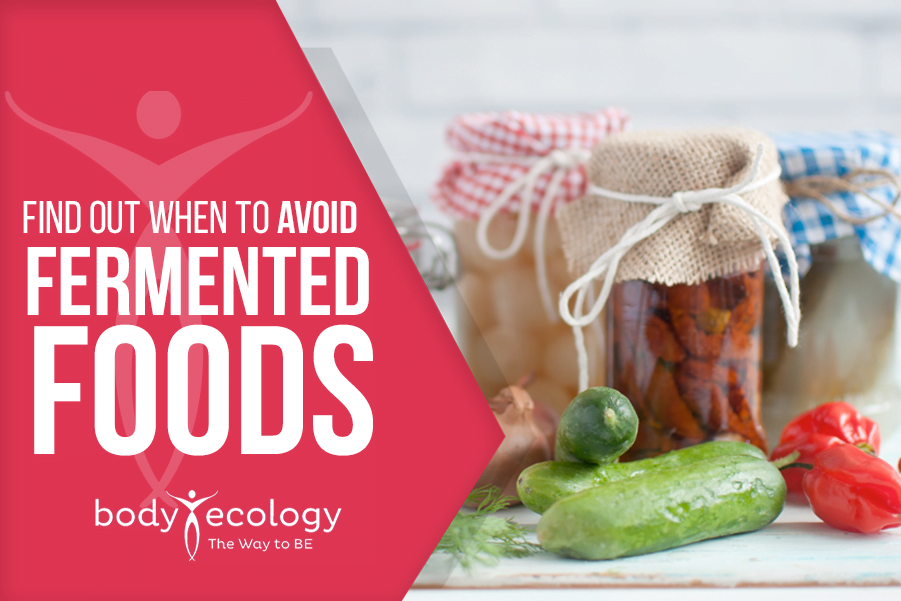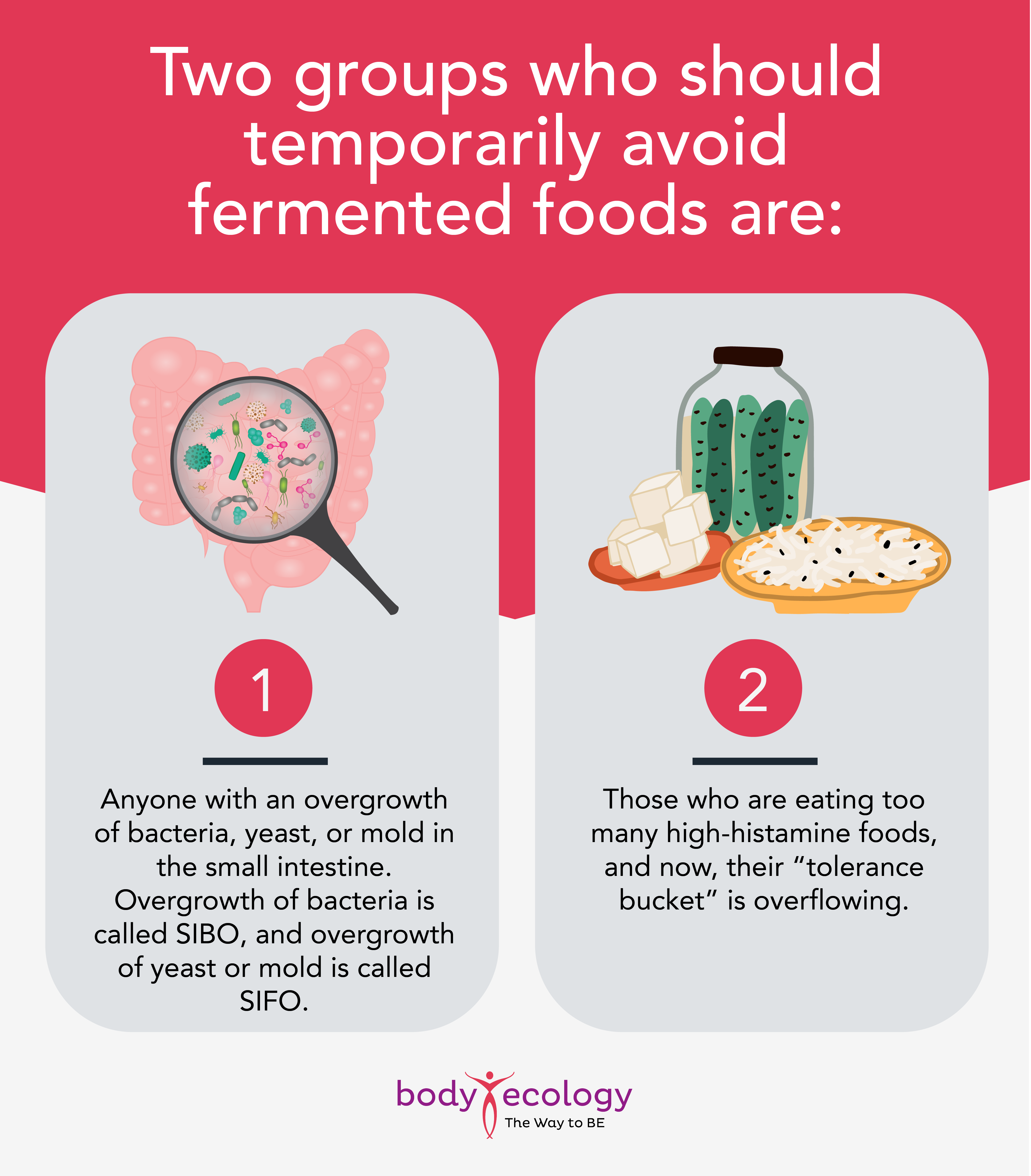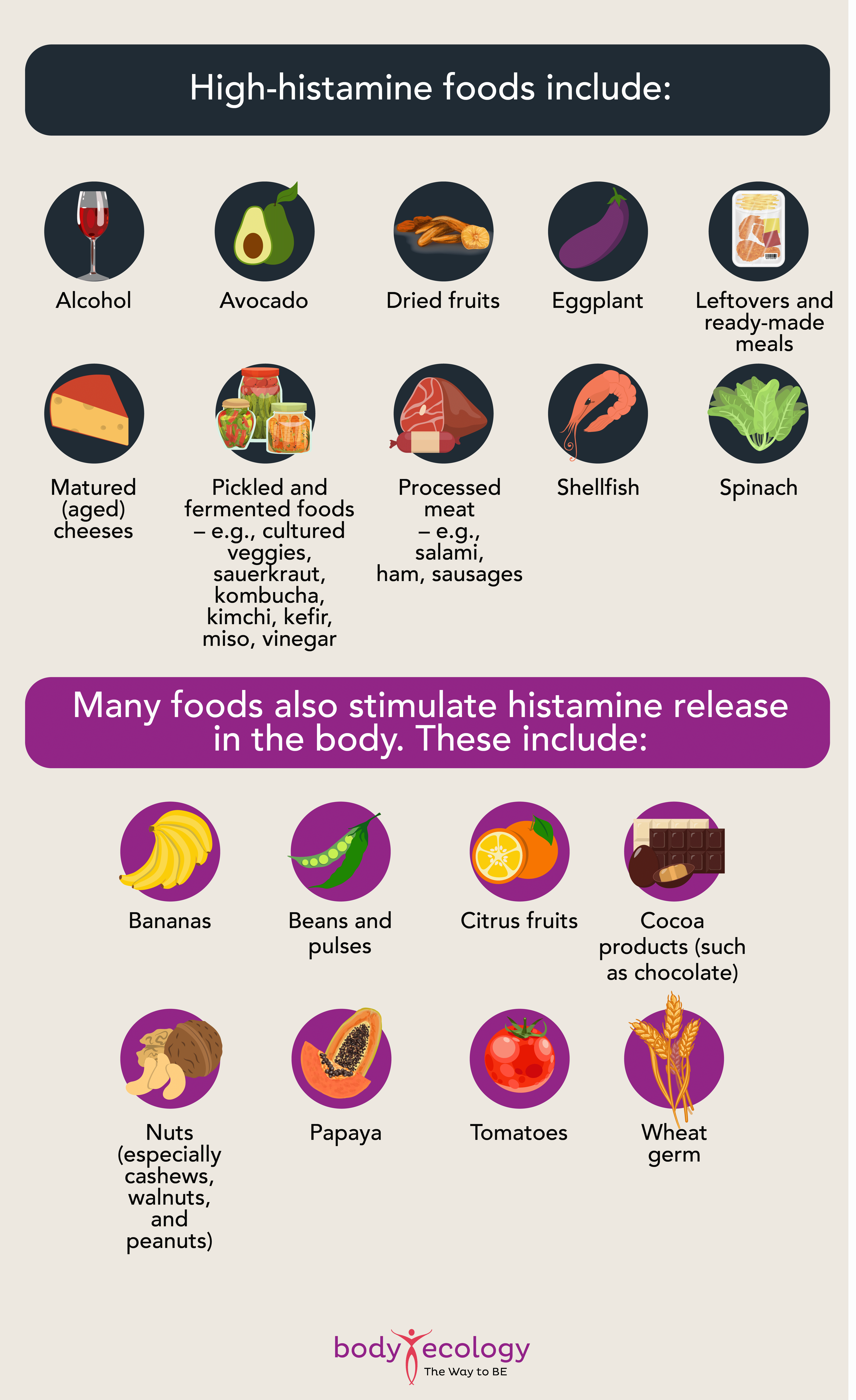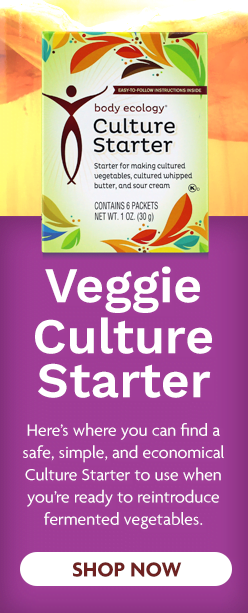
Fermented foods are sometimes given a bad rap. Are they right for *you*?
Fermented foods are being given a bad rap. But the truth is that sometimes, fermented foods aren’t right for many of us. This could be a case of wrong place, wrong time — or wrong fermented food. There are lots of different kinds of fermented foods out there, so how can you tell what to steer clear of and when?
Not all fermented foods are the same
Lumping all “fermented foods” together as if they’re the same is a mistake. There’s a major difference between wine, beer, and kombucha, with “wild yeast” starting the fermentation, versus fermented vegetables and kefir or yogurt. (These last two are usually made from dairy and may or may not be right for you.)
Have you ever tried to prepare a sourdough starter from scratch to make homemade sourdough bread or made your own kombucha scoby? Both of these types of fermentation rely on wild yeast floating around in the environment to start the fermentation process.
Depending on where you’re making your bread or brewing your kombucha, beer, or wine, the results can be dramatically different.
Because of the huge variation in the many species of yeast and bacteria floating around in any given environment — a kitchen, a brewery, or a winery — different compositions of probiotics (and pathogens) in subsequent foods and beverages from this natural or “wild fermentation” can result in vastly different results in the end.
In contrast, a readymade starter offers controlled fermentation, where you can be sure of the microbes involved and the likely composition of fermented vegetables/foods at the end.
If you’ve had a bad experience with home fermentation, consider using a Starter Culture to reignite your enthusiasm for ferments. Starters help greatly increase the numbers of good microbes in your finished product, and you have more control over the bacteria and yeast you’re consuming.1
How about a little fermentation history?
Hopefully, “man did not have to live by bread alone.” Made by pounding ancient grains into flour, adding water, and then allowing Nature to ferment the bread, sourdough bread was an important survival food in our ancestors’ diet. Fermenting also helped make the bread more digestible and nutritious. Of course, our ancestors had different grains and wheat than we eat today.
You can still easily make a sourdough “starter” by mixing flour and water together and leaving the mixture exposed to the air. After a week or so at room temperature, millions of microbes in your kitchen will inoculate your starter and give your loaf of bread a much-loved sour or tart flavor. You won’t get this flavor if you make bread with store-bought yeast.
Looking back — at least 8,000 years ago — grapes transforming into wine was a mysterious process. As far as they knew, people merely harvested and crushed the grapes, put them into clay pots, and waited. Magically, the fermented wine did not spoil and provided an important beverage in times when sanitation was poor, and water was not always available. (Refrigeration did not exist.)
Of course, we know today that the wild yeast on the skin of the grapes inoculated the grape juice, ate the sugar, and made alcohol. The alcohol kept the wine stable.
In 1863, French winemakers approached the renowned microbiologist Louis Pasteur to investigate what made their wine spoil. Pasteur discovered that good bacteria and yeast caused the wine to ferment when they were present but spoiled when bad ones invaded the wine.
Today:
- Most of the beers and wines around the world are made with starters produced in a lab.
- The starters are carefully protected so that no wild yeast are allowed to crash the party.
- This allows the beer or winemaker to control the flavor and quality of their finished product.
- But a new trend is emerging where the old-fashioned method of using wild fermentation to produce beer or wine is making a comeback.
- Wineries and breweries are gaining respect for Nature’s Way — allowing Her to do Her job without the interference of man.
At Body Ecology, we encourage you to adopt some of the ways of our ancestors and eat and drink cultured foods — mostly fermented vegetables. But please don’t eat just any fermented food or drink because some are great for you, and some are not.
When should I skip fermented foods?
In my many years of experience working with fermented foods, I have found that there are two groups of people who should avoid them. But not necessarily all fermented foods as they’re not all the same, and you don’t want to avoid them forever.

Have you noticed that you don’t feel well when you drink beer or wine? How about kombucha? For many, these very popular drinks cause gas and bloating. People drink them anyway because they’ve been told (or read) that these fermented drinks supply beneficial microbes to your microbiome.
But there’s a widespread misunderstanding about fermented foods, and they’re not all the same. Kombucha, wine, and beer are not like kimchi, cultured veggies, and our Body Ecology probiotic liquids.
There’s a reason you’re reacting to beer, wine, and kombucha, and if you are, of course, avoid them. But your reaction should be a strong clue that you could have SIBO or SIFO. Start by looking up the foods on Monash University’s FODMAP list and eliminate those.
When temporarily avoiding the foods on the FODMAP list, people usually feel better in a matter of days. But this diet has its limitations if you stay on it long-term. Your goal should be to solve the source of the problem. There are excellent functional medicine doctors who specialize in treating SIBO and SIFO. A wonderful book to read is Healing SIBO: Fix the Real Cause of IBS, Bloating, and Weight Issues in 21 Days by my friend Shivan Sarna.
I also recommend an excellent podcast by Dr. Nirala Jacobi called The SIBO Doctor.
If they’re right for you, your gut’s going to love this: Learn how to become a fermented foodie.
What happens if I have yeast overgrowth?
You could also be reacting to fermented vegetables if you have a yeast and/or a mold infection. Mold and yeast (both members of the fungus family) can be colonizing the digestive tract but can also be systemic, meaning in your bloodstream and throughout your body. The Great Plains Organic Acid Test will tell you if this is your problem. Yeast or mold can colonize your sinuses and lungs too.
Wine, beer, and many kombucha products also contain alcohol, which turns into acetaldehyde. If you do have candidiasis, the yeast make a toxin called acetaldehyde — a lot of it — 24/7. Acetaldehyde has thousands of research studies showing that it’s harmful. It certainly may affect the brain and potentially lead to cancer.2
Here’s a list of foods that are high in histamine and should be avoided until you’ve solved the true cause of your histamine sensitivity:

Clearly, some of the items in these two lists are unhealthy at the best of times, but many of these foods offer a bounty of nutritional benefits. Instead of avoiding these foods forever, the real solution is to get to the root cause of why you’re reacting to high-histamine foods and solve the problem.
The problem is almost always in the gut. Work on fixing your gut! Then slowly add the right kind of fermented vegetables back into your diet. Fermented foods are needed to help rebuild and renew the inner ecosystem in the gut, vagina, and urinary tract.3,4
Can I take probiotics if I have high levels of histamine?
Yes. Certain probiotics are known to be safe. They are:
- Bifidus bifidum
- B. lactis
- B. longum
- Lactobacillus gasseri
- L. salivarius
- L. rhamnosus
But don’t avoid the right kind of fermented foods forever.
Certain fermented foods are a must for promoting long-term gut health and a healthy immune function.5,6
And so:
- Once you’ve been off high-histamine foods for three to four weeks, start adding certain ones back in slowly.
- We recommend making homemade fermented vegetables using a “starter” that contains Lactobacillus plantarum. This probiotic species is well-known for effectively degrading (breaking down) histamine.7
The basic idea is to keep histamine levels in check so your histamine load doesn’t get so high that it causes symptoms. In summary, if you currently have a relatively high intake of high-histamine foods and are having symptoms, eliminate them for a while and avoid all fermented foods until you lower your histamine bucket.
Then add in the right kind of fermented foods to ensure a robust and diverse inner ecosystem.8
Note: The Lactobacillus plantarum species we have in our Culture Starter helps break down histamine.9 This means when you eat a spoonful or two of cultured veggies made with our Body Ecology Starter, the L. plantarum will help degrade histamine in the meal and in your gut.
You can also make young coconut kefir and kefir cheese using this Starter. Eventually, add in probiotic liquids after you’ve treated the bacterial overgrowth — because a healthy microbiome in the colon will be needed to help prevent ongoing relapse of SIBO/SIFO.
REFERENCES:
- 1. Dimidi E, Cox SR, Rossi M, Whelan K. Fermented Foods: Definitions and Characteristics, Impact on the Gut Microbiota and Effects on Gastrointestinal Health and Disease. Nutrients. 2019;11(8):1806. Published 2019 Aug 5. doi:10.3390/nu11081806.
- 2. Uittamo J, Siikala E, Kaihovaara P, Salaspuro M, Rautemaa R. Chronic candidosis and oral cancer in APECED-patients: production of carcinogenic acetaldehyde from glucose and ethanol by Candida albicans. Int J Cancer. 2009 Feb 1;124(3):754-6. doi: 10.1002/ijc.23976. PMID: 18975379.
- 3. Eales J, Gibson P, Whorwell P, Kellow J, Yellowlees A, Perry RH, Edwards M, King S, Wood H, Glanville J. Systematic review and meta-analysis: the effects of fermented milk with Bifidobacterium lactis CNCM I-2494 and lactic acid bacteria on gastrointestinal discomfort in the general adult population. Therap Adv Gastroenterol. 2017 Jan;10(1):74-88. doi: 10.1177/1756283X16670075. Epub 2016 Oct 10. PMID: 28286561; PMCID: PMC5330605.
- 4. Tero Kontiokari, Jaana Laitinen, Leea Järvi, Tytti Pokka, Kaj Sundqvist, Matti Uhari, Dietary factors protecting women from urinary tract infection, The American Journal of Clinical Nutrition, Volume 77, Issue 3, March 2003, Pages 600–604, https://doi.org/10.1093/ajcn/77.3.600.
- 5. Taylor BC, Lejzerowicz F, Poirel M, Shaffer JP, Jiang L, Aksenov A, Litwin N, Humphrey G, Martino C, Miller-Montgomery S, Dorrestein PC, Veiga P, Song SJ, McDonald D, Derrien M, Knight R. Consumption of Fermented Foods Is Associated with Systematic Differences in the Gut Microbiome and Metabolome. mSystems. 2020 Mar 17;5(2):e00901-19. doi: 10.1128/mSystems.00901-19. PMID: 32184365; PMCID: PMC7380580.
- 6. Car Reen Kok, Robert Hutkins, Yogurt and other fermented foods as sources of health-promoting bacteria, Nutrition Reviews, Volume 76, Issue Supplement_1, 1 December 2018, Pages 4–15, https://doi.org/10.1093/nutrit/nuy056.
- 7. Kung HF, Lee YC, Huang YL, Huang YR, Su YC, Tsai YH. Degradation of Histamine by Lactobacillus plantarum Isolated from Miso Products. J Food Prot. 2017 Oct;80(10):1682-1688. doi: 10.4315/0362-028X.JFP-17-135. PMID: 28885051.
- 8. Melini F, Melini V, Luziatelli F, Ficca AG, Ruzzi M. Health-Promoting Components in Fermented Foods: An Up-to-Date Systematic Review. Nutrients. 2019;11(5):1189. Published 2019 May 27. doi:10.3390/nu11051189.
- 9. Kung HF, Lee YC, Huang YL, Huang YR, Su YC, Tsai YH. Degradation of Histamine by Lactobacillus plantarum Isolated from Miso Products. J Food Prot. 2017 Oct;80(10):1682-1688. doi: 10.4315/0362-028X.JFP-17-135. PMID: 28885051.









